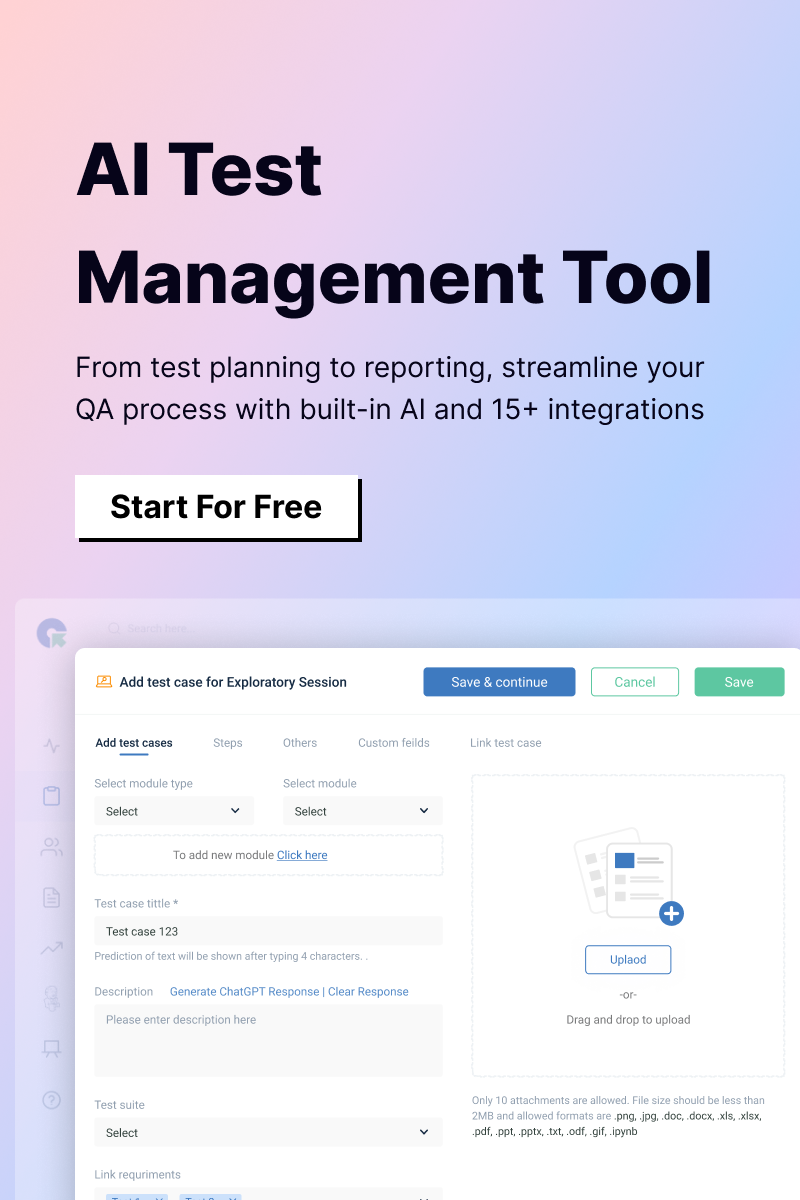To practice automation testing:
- Learn the Basics: Familiarize yourself with testing concepts and programming languages (e.g., Java, Python, JavaScript). Understand core testing types like functional, regression, and performance testing.
- Choose an Automation Tool: Select a tool based on your needs (e.g., Selenium for web apps, Appium for mobile, JUnit/TestNG for unit tests, JMeter for performance testing).
- Set Up a Test Environment: Install the necessary tools, set up IDEs (Eclipse or IntelliJ), and configure browsers or devices for testing.
- Start with Simple Tests: Write basic test scripts like verifying login functionality or simple form submissions.
- Learn Frameworks: Get familiar with frameworks such as Selenium WebDriver (for web), TestNG/JUnit (for test organization), or Appium (for mobile) to structure and organize tests.
- Practice Debugging and Reporting: Work on debugging failed tests and create detailed reports using tools such as Allure or ExtentReports.
- Build Automation Pipelines: Integrate tests with CI/CD tools such as Jenkins, GitLab CI, or CircleCI for continuous testing.
- Handle Dynamic Content: Learn to work with dynamic web elements (e.g., Ajax, pop-ups) and handle synchronization issues.
- Expand Test Coverage: Gradually automate more complex scenarios, including multi-step processes, different browsers, and devices.
- Join Testing Communities: Participate in forums or groups (Stack Overflow, Reddit, or Testing Meetups) to get feedback and improve your skills.
How to prepare for an automation testing interview?
To prepare for an automation testing interview, focus on programming (90%) over testing tools (10%).
- Master Programming: Focus on core programming (e.g., Core Java for Selenium), OOP concepts, and debugging.
- Learn Tools: Get hands-on with automation tools (Selenium and QTP), and understand their versions and benefits.
- Understand Frameworks: Familiarize with frameworks (Data-Driven, Keyword-Driven, and Page Object Model) for structured and reusable tests.
- Practice Scripting: Write and debug automation scripts for UI and API tests, handling dynamic elements.
- CI/CD Integration: Learn to integrate tests into CI/CD pipelines with tools (Jenkins).
- Version Control: Understand Git for managing test scripts and collaborating with teams.
- Attention to Detail: Be prepared to discuss versions, frameworks, and challenges in previous projects.
How to design a framework for automation testing?
To build an effective automation framework, focus on:
- Design Pattern: Use the Page Object Model or Page Factory Model to structure objects and tests.
- Framework Model: Choose a model based on your application’s needs:
- Data-Driven for data-heavy apps.
- Modular for large apps with many components.
- Behavior-Driven for non-technical users.
- Hybrid combines various models for flexibility.
Key Practices:
- Create Wrappers: Sum up core methods for easier maintenance.
- Separate Data: Store test data and config in external files for easy updates.
- Reusability: Reuse methods to simplify scripts.
- Modularization: Break the app into smaller, manageable parts for easier maintenance.
- BI Tools: Use tools (Maven or Gradle) to ensure portability.
How does QA Touch enhance automation testing?
QA Touch enhances automation testing by integrating with popular automation tools such as Selenium, Cypress, and Postman, allowing teams to manage test cases, execute tests, and track results from a centralized platform. It supports continuous integration (CI) and continuous delivery (CD) pipelines, ensuring automated tests are executed during the development lifecycle. QA Touch generates detailed reports on test execution, defects, and progress, enabling teams to optimize their testing efforts and improve collaboration. With its comprehensive test management and defect tracking features, QA Touch helps the entire automation testing process.



